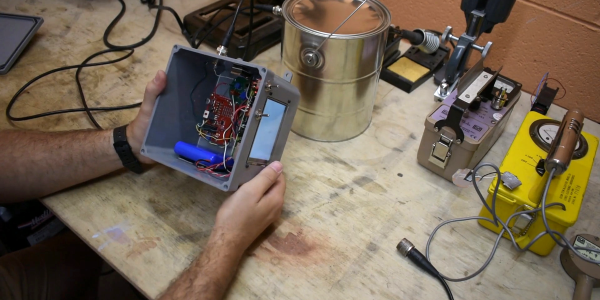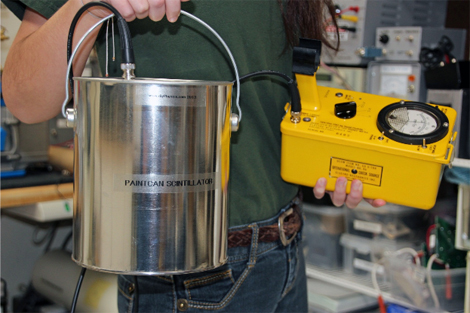Can’t find a recently updated survey of radioactivity in your neighborhood? Try [Hunter Long]’s DIY scintillation counter warwalking rig. (Video also embedded below.) What looks like a paint can with a BNC cable leading to an unassuming grey box is actually a complete kit for radiation surveying.
Inside the metal paint can is a scintillation counter, which works by attaching something that produces light when struck by ionizing radiation on the end of a photomultiplier tube, to make even the faintest hits “visible”. And the BNC cable leads to a Raspberry Pi, touch screen, GPS, and the high-voltage converters needed to make the photomultiplier do its thing.
The result is a sensitive radiation detector that logs GPS coordinates and counts per second as [Hunter] takes it out for a stroll. Spoilers: he discovers that some local blacktop is a little bit radioactive, and even finds a real “hot spot”. Who knows what else is out there? With a rig like this, making a radiation map of your local environment is a literal walk in the park.
[Hunter] got his inspiration for the paint-can detector from this old build by [David Prutchi], which used a civil-defense Geiger counter as its source of high voltage. If you don’t have a CD Geiger detector lying around, [Alex Lungu]’s entry into the Hackaday Prize builds a scintillation detector from scratch.
Continue reading “Warwalking For Radiation”













